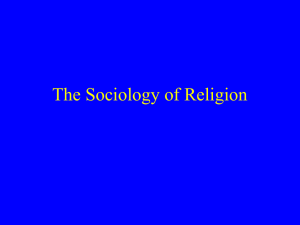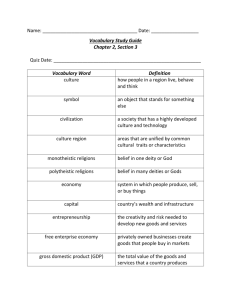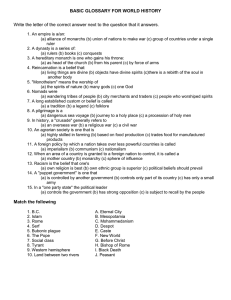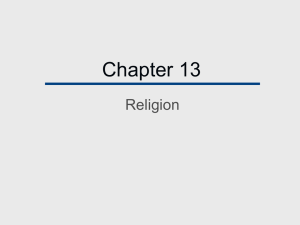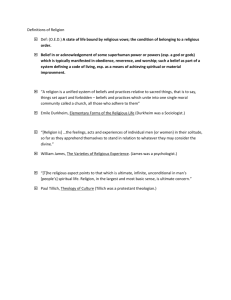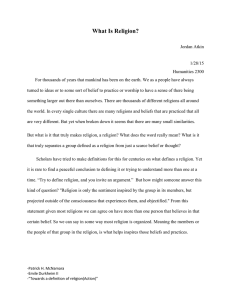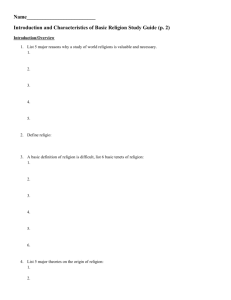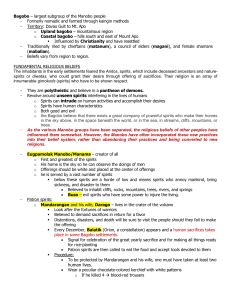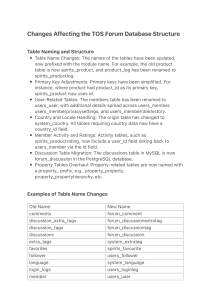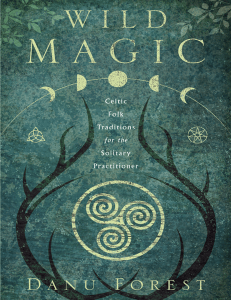Durkheim's Religion Summary: Key Concepts & Analysis
advertisement
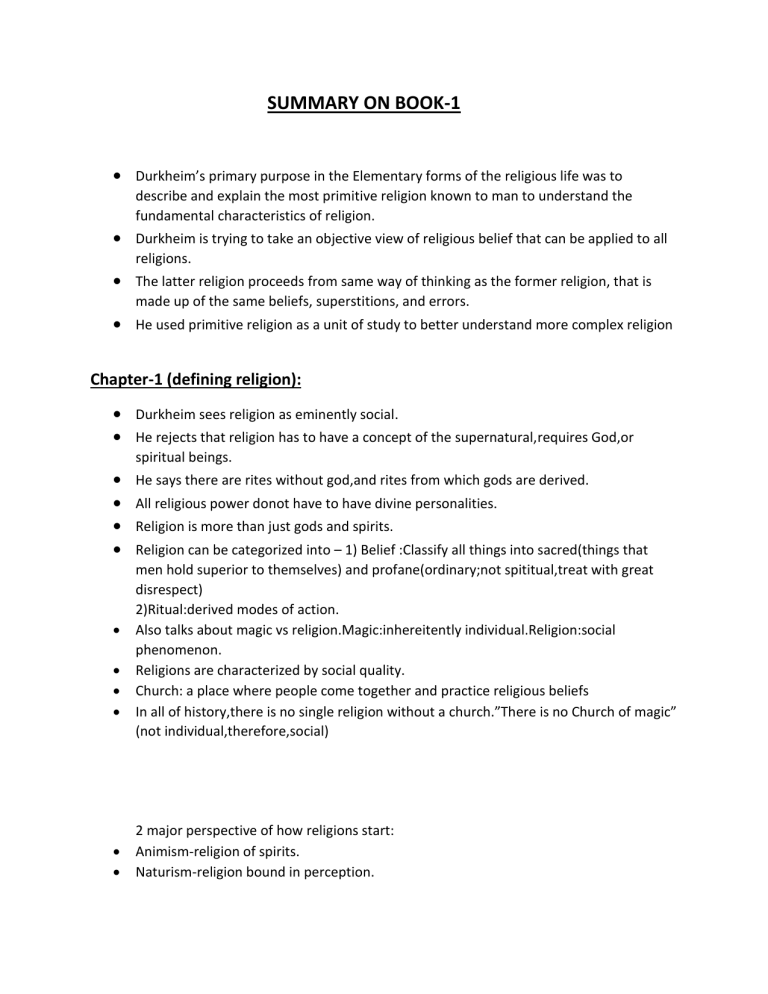
SUMMARY ON BOOK-1 Durkheim’s primary purpose in the Elementary forms of the religious life was to describe and explain the most primitive religion known to man to understand the fundamental characteristics of religion. Durkheim is trying to take an objective view of religious belief that can be applied to all religions. The latter religion proceeds from same way of thinking as the former religion, that is made up of the same beliefs, superstitions, and errors. He used primitive religion as a unit of study to better understand more complex religion Chapter-1 (defining religion): Durkheim sees religion as eminently social. He rejects that religion has to have a concept of the supernatural,requires God,or spiritual beings. He says there are rites without god,and rites from which gods are derived. All religious power donot have to have divine personalities. Religion is more than just gods and spirits. Religion can be categorized into – 1) Belief :Classify all things into sacred(things that men hold superior to themselves) and profane(ordinary;not spititual,treat with great disrespect) 2)Ritual:derived modes of action. Also talks about magic vs religion.Magic:inhereitently individual.Religion:social phenomenon. Religions are characterized by social quality. Church: a place where people come together and practice religious beliefs In all of history,there is no single religion without a church.”There is no Church of magic” (not individual,therefore,social) 2 major perspective of how religions start: Animism-religion of spirits. Naturism-religion bound in perception. Chapter-2 (animism): Animism-The belief that all plants,animals,and objects have spirits -the belief in the existence of spirits seperable from bodies. Soul has “second self” that is clearly seen in dreams,but remains connected to body. People assign animate properties to inanimate things. After death,soul turns into spirit no longer bound to its profane form
